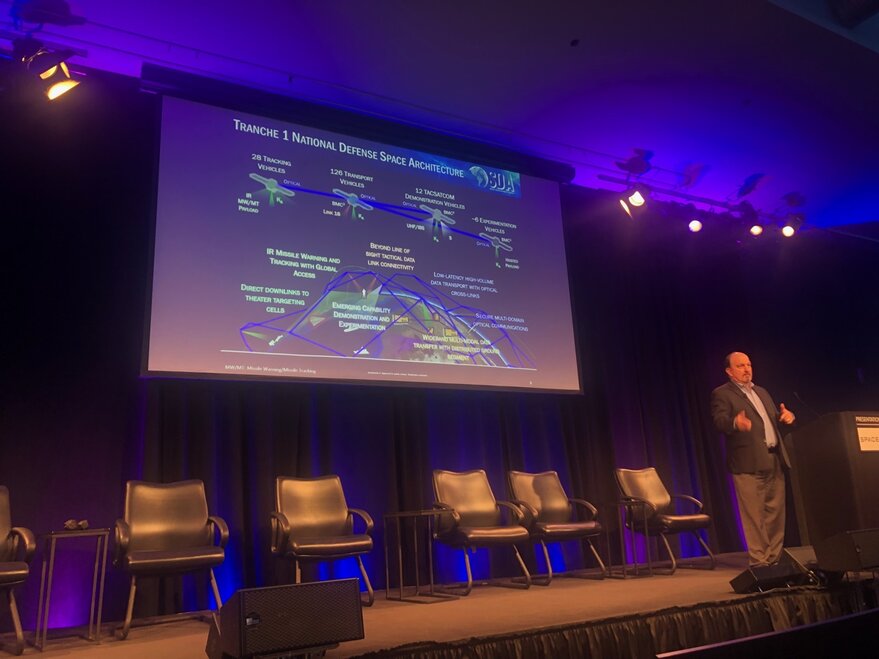MOUNTAIN VIEW, Calif. – The Defense Department’s Space Development Agency is looking for ways to rapidly acquire Earth observation data, Frank Turner, SDA technical director, said at the SmallSat Symposium here.
“We’ve talked to a number of commercial providers in this conference and elsewhere about how we can connect to your systems and enable the operators to use your data for tactical missions,” Turner said during a Feb. 10 keynote address. “We want to understand how that works and how we can make it beneficial for both ourselves as the government and you as commercial providers.”
Synthetic radar satellite constellation operator Capella Space is one of SDA’s first commercial data partners.
Hybrid architecture is a popular term for government and commercial satellites working in partnership.
“I want to drive that concept all the way down from the hardware layer to the information layer,” Turner said. “As you are developing commercial information, how can I get access to that information and provide it to the warfighter and make it usable?”
To date, SDA has focused primarily on acquiring satellites more quickly, in greater quantity and at lower prices than the Defense Department has traditionally paid.
Lockheed Martin and York Space Systems won SDA contracts in 2020 to produce 10 satellites apiece for SDA’s Transport Layer Tranche 0. Fourteen of the 20 satellites, scheduled to begin launching in September, will be equipped with four optical intersatellite links. The other six will have two optical intersatellite links, plus Link 16 tactical data network payloads.
The average cost of the satellites will be $14.1 million, Turner said.
For SDA Transport Layer Tranche 1, the average cost of the 126 satellites is likely to fall in the $9 million to $11 million range, Turner said. Each satellite is expected to feature four optical intersatellite links, a Link 16 payload and Ka-band communications for transmitting and receiving mission-related data.
SDA also intends to buy 28 missile-tracking satellites for the Tracking Layer Tranche 1. That program will not begin this year as expected, though, unless Congress provides funding.
“If we get a budget this year, we think we’re going to get money for tracking,” Turner said. “If we don’t get a budget or if the budget doesn’t look the way we think it may well look, then that will fall off the table.”
SDA plans to announce contracts for Transport Layer Tranche 1 by the end of the month, Turner said.
In parallel, SDA is soliciting proposals for the ground architecture to support Transport Layer Tranche 1.
“It’s a heck of a problem and I apologize for that,” Turner said. “We need a team of folks who can take a look at the missions, at what we need to operate from a ground perspective, and how to build the constellation management, mission management and network management to make it all work together.”
Speed is SDA’s primary objective as the agency races to adopt advanced technology and establish a proliferated constellation of satellites in low Earth orbit. To speed the flow of information to military forces around the world, SDA wants to avoid sending data to the ground for processing and back to space for distribution to people around the world.
“We’re extremely interested in the kinds of algorithms we can put on orbit, the kinds of compute capabilities we can put on orbit,” Turner said.
